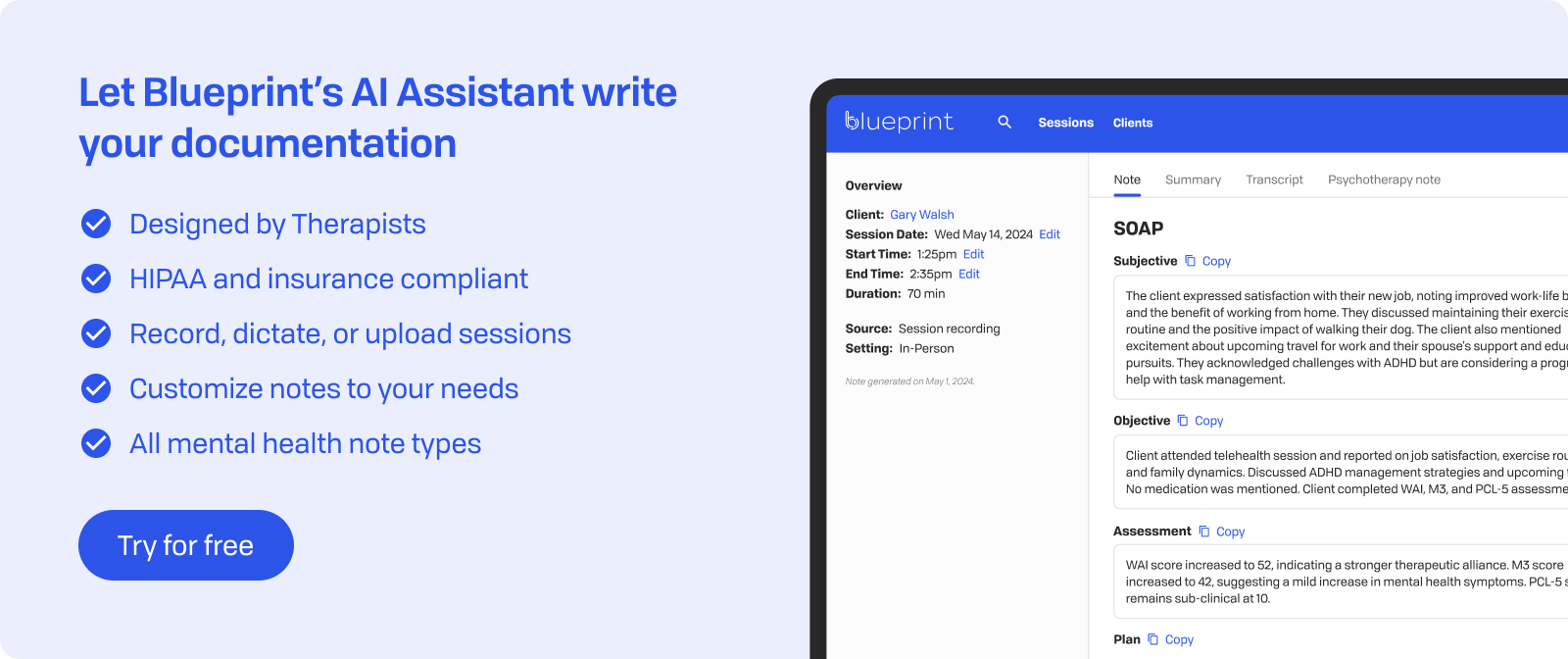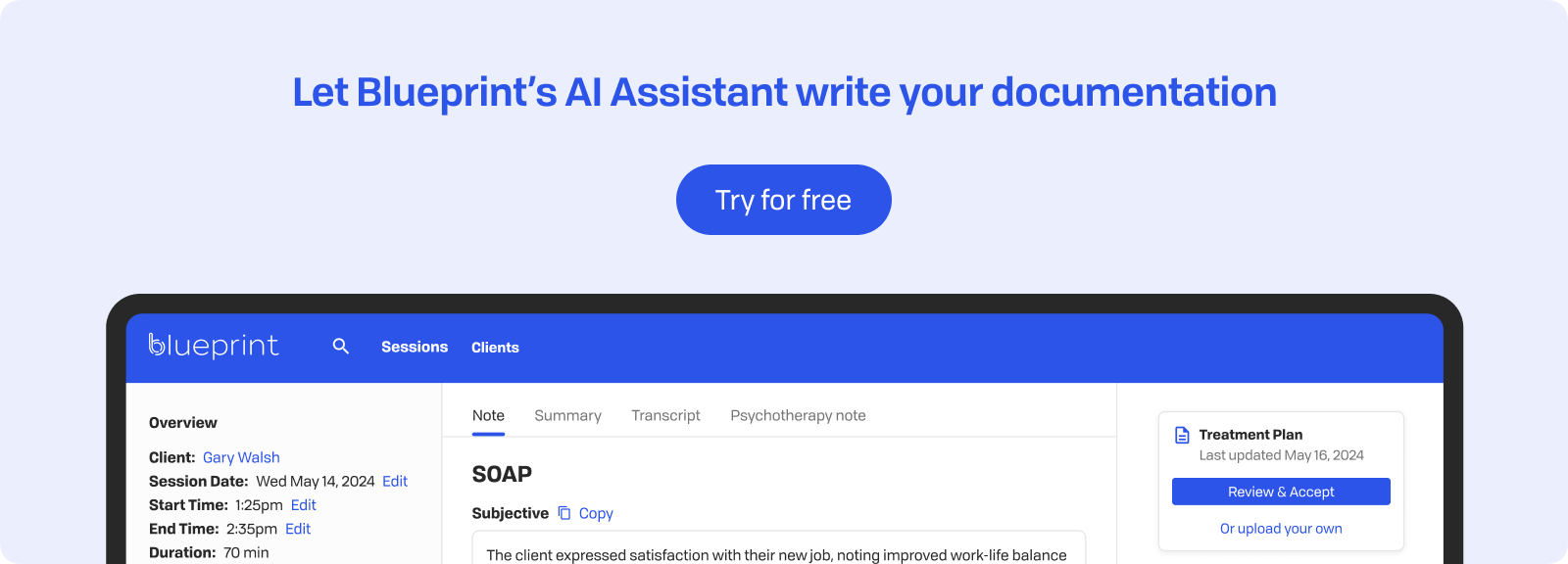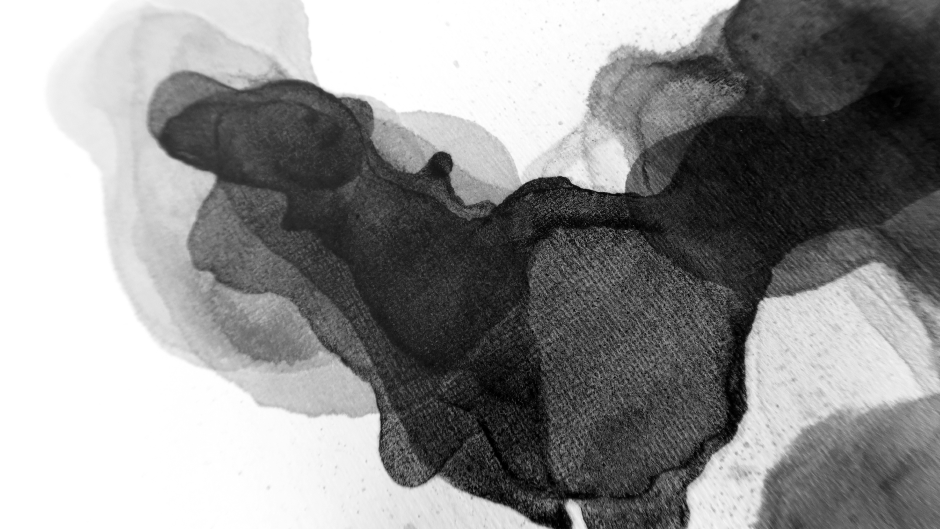In Brief
Let's look at one of psychology's most intriguing and debated assessment tools. You've probably seen them in popular culture—those mysterious inkblots or ambiguous pictures that supposedly reveal our deepest thoughts and feelings.
These tools have sparked heated debates among mental health professionals for decades. Some support their clinical use, while others question their scientific validity and reliability.
Knowing when and how to use these assessments effectively can add to your therapeutic skills. Let's explore what makes these tools unique and why they continue to fascinate both clinicians and clients.
Introduction to Projective Tests
Projective tests use ambiguous stimuli to reveal underlying thoughts, feelings, and personality traits. Unlike structured questionnaires, these assessments rely on the idea that people project their unconscious material onto ambiguous stimuli.
Famous examples include the Rorschach inkblot test, where clients describe what they see in inkblots, and the Thematic Apperception Test (TAT), which uses ambiguous scenes for storytelling. Sentence completion tasks provide prompts like "My mother always..." for spontaneous client responses.
These methods emerged from psychodynamic therapy in the early 20th century, rooted in Freudian concepts of the unconscious mind. Hermann Rorschach developed his inkblot test in 1921, and Henry Murray and Christiana D. Morgan created the TAT in the 1930s. These test developers believed ambiguous stimuli could bypass conscious defenses and reveal hidden aspects of personality.

The Appeal of Projective Methods
The appeal of projective tests lies in their ability to access unconscious processes and hidden conflicts. When clients respond to ambiguous stimuli, they may reveal material that wouldn't come out through direct questioning. This indirect approach can uncover defense mechanisms, internal conflicts, and unconscious motivations influencing behavior.
These tools help facilitate discussion of sensitive topics that clients might find difficult to address directly. A client who struggles to talk about family relationships might reveal significant dynamics when describing TAT cards. The ambiguity creates a safe distance, allowing exploration of painful or threatening material.
Projective methods offer rich qualitative insights that structured measures might miss. While standardized questionnaires provide numerical scores, projective responses offer detailed, individualized data about thought processes, emotional themes, and personal meanings. This depth can highlight how clients uniquely organize their inner worlds and view their relationships.
Limitations and Criticisms
Projective tests, while intriguing, face significant scientific scrutiny. The main concern is their validity and reliability, essential aspects for any psychological assessment tool. Research often shows that different clinicians interpret the same responses differently, and the same client might produce varying responses across different sessions.
Key limitations include:
- Interpretative Subjectivity: Without standardized scoring procedures, results rely heavily on the clinician's experiences, unconscious process biases, and theoretical orientation. Two experienced professionals might reach completely different conclusions from the same Rorschach protocol.
- Cultural Bias: Developed primarily within Western contexts, these tests may not translate well across cultures. A response considered pathological in one culture might be perfectly normal in another.
- Weak Empirical Support: Limited evidence shows that projective tests accurately predict real-world behaviors or measure what they claim to assess. Meta-analyses often reveal poor correlations with objective measures of the same constructs.
- Risk of Over-Pathologizing: The ambiguous nature of stimuli can lead clinicians to see pathology in normal variations in perception. A creative or unconventional response might be misinterpreted as indicative of psychological disturbance.
- Time and Training Demands: Proper administration and interpretation require extensive specialized training and significant time investment, making these tools impractical for many clinical settings.
These limitations don't mean projective tests lack value, but they do require careful consideration around a clinician’s intention for using them. Recognizing these constraints helps ensure responsible use and prevents overreliance on ambiguous data when making important clinical decisions.

Ethical Use of Projective Tests in Therapy
Using projective tests ethically requires careful attention to professional standards and client welfare. Given the interpretive nature of these assessments, maintaining ethical boundaries becomes even more important than with standardized measures.
Informed consent is crucial for ethical projective testing. Clients need to know:
- The purpose and nature of the assessment, including that responses will be interpreted subjectively
- How results will be used in treatment planning and diagnosis
- Limitations of the test, including concerns about validity and reliability
- Their right to refuse participation or discontinue at any time
Using projective results as one data point among many prevents overreliance on ambiguous findings. These assessments should supplement—never replace—clinical interviews, behavioral observations, and validated measures. Making diagnostic decisions based solely on projective test results violates ethical standards and risks significant harm to clients.
Communicating findings requires particular sensitivity. The interpretive nature of projective tests means results often reflect hypotheses rather than definitive conclusions. When sharing insights:
- Frame interpretations tentatively, using language like "this suggests" rather than "this proves"
- Invite client collaboration in understanding what responses might mean
- Avoid pathologizing language that could damage the therapeutic relationship
- Connect findings to treatment goals in constructive, hopeful ways
- Practice cultural humility, inviting the client to share about their values, identities, and lived experiences that may shape how they interpret and respond to assessment results.
Remember that projective test interpretations can significantly impact how clients view themselves. Presenting findings with humility, transparency about limitations, and respect for the client's own self-understanding ensures these tools enhance rather than harm the therapeutic process.

When Projective Tests Can Be Helpful
Despite their limitations, projective tests offer unique therapeutic value in specific clinical situations. Knowing when these tools can enhance your practice helps you use them wisely and effectively.
Exploring client creativity and narrative meaning-making is one of the most valuable applications. Projective tests invite clients to construct stories, create meanings, and express themselves through metaphor and symbol. This process reveals how clients organize their experiences and make sense of their world. A client describing TAT cards might spontaneously create narratives that illuminate core life themes, relationship patterns, or unresolved conflicts in ways that direct questioning cannot achieve.
Working with resistant or guarded clients is another area where projective methods excel. Some clients struggle with direct self-disclosure due to:
- Defensive patterns that block conscious awareness of painful material
- Limited insight into their own emotional processes
- Fear of judgment when discussing sensitive topics directly
- Cultural norms that discourage explicit emotional expression
The indirect nature of projective tasks provides a safer entry point. Discussing what someone sees in an inkblot feels less threatening than answering "How do you feel about your mother?"
Supplementing standard cognitive or behavioral assessments adds depth to clinical understanding. While structured measures provide valuable quantitative data, projective responses offer qualitative richness that captures individual nuance. This combination creates a more complete clinical picture, especially when standardized measures yield contradictory or puzzling results. The projective material might reveal underlying dynamics that explain seemingly inconsistent findings from other assessments.
Alternatives and Complementary Tools
Modern assessment approaches offer reliable alternatives to projective tests while maintaining clinical depth. Self-report measures like validated personality inventories and symptom questionnaires provide standardized data with strong psychometric properties. These tools offer clear scoring criteria, normative data, and consistent interpretation across clinicians.
Structured clinical interviews combine the benefits of standardization with clinical flexibility. Tools like diagnostic interviews allow systematic exploration of symptoms while maintaining space for clinical judgment and follow-up questions. Behavioral observations in natural or clinical settings provide objective data about actual functioning rather than hypothetical responses.
Combining assessment approaches creates richer clinical formulations:
- Objective measures establish baseline functioning and track quantifiable change
- Structured interviews explore symptom patterns and diagnostic criteria systematically
- Behavioral observations reveal real-world functioning and interpersonal dynamics
- Projective elements (when used carefully) add depth to understanding unconscious material
Integration requires thoughtful synthesis rather than simple addition. Start with reliable, validated measures as your foundation. Use structured interviews to clarify diagnostic questions and explore specific concerns. Add behavioral observations to understand how symptoms and patterns manifest in daily life. If projective methods are included, treat their findings as hypotheses to explore rather than definitive conclusions.
This multi-method approach respects both scientific rigor and clinical complexity. Each tool contributes unique information: objective measures provide reliable baselines, interviews offer diagnostic clarity, observations reveal functional impact, and projective responses might suggest areas for therapeutic exploration. Together, they create a comprehensive understanding that serves both clinical decision-making and treatment planning.

Key Takeaways
Projective tests remain valuable clinical tools when used appropriately within their limitations. These assessments offer unique insights into unconscious processes, defense mechanisms, and narrative meaning-making that structured measures might miss. However, their effectiveness depends on how you integrate them into comprehensive assessment practices.
Important considerations for ethical use:
- Validity concerns are real: Limited empirical support and interpretive subjectivity mean projective findings should never stand alone as diagnostic evidence.
- Cultural competence matters: Responses vary significantly across cultural contexts, requiring careful consideration of each client's background. Therapists should also remain mindful of their own unconscious biases, which can subtly shape responses and interpretations
- Informed consent is essential: Clients must understand the subjective nature of interpretation and how results will be used.
- Collaborative interpretation enhances value: Involving clients in exploring what their responses might mean respects their autonomy and deepens therapeutic engagement.
Best practices for integration:
- Start with validated measures: Build your assessment foundation on psychometrically sound tools.
- Use projectives selectively: Reserve these methods for specific situations where indirect exploration adds clinical value.
- Treat findings as hypotheses: Projective responses suggest areas for exploration, not definitive conclusions.
- Document interpretive reasoning: Clear documentation protects both you and your clients.
The future of projective testing lies not in choosing sides in the validity debate, but in thoughtful integration. When combined with evidence-based assessments, behavioral observations, and structured interviews, projective methods can enrich clinical understanding. Their value emerges through careful, ethical application that respects both their unique contributions and inherent limitations.

How Blueprint can help streamline your workflow
Blueprint is a HIPAA-compliant AI Assistant built with therapists, for the way therapists work. Trusted by over 50,000 clinicians, Blueprint automates progress notes, drafts smart treatment plans, and surfaces actionable insights before, during, and after every client session. That means saving about 5-10 hours each week — so you have more time to focus on what matters most to you.
Try your first five sessions of Blueprint for free. No credit card required, with a 60-day money-back guarantee.
























